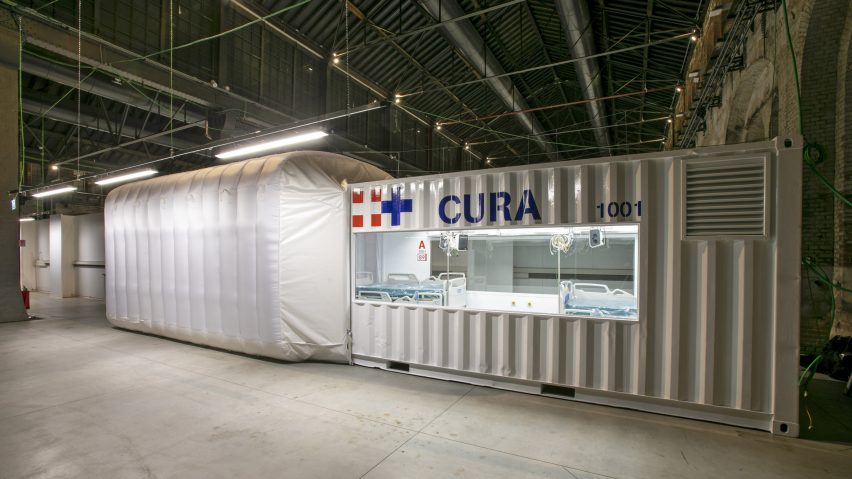
Shipping-container intensive care unit installed at Turin hospital
A two-bed intensive care unit within a shipping container, designed by Italian architects Carlo Ratti and Italo Rota, has been built at a hospital in Turin and is being used to treat patients fighting the coronavirus.
Named Connected Units for Respiratory Ailments (CURA), the intensive care pod was designed by Carlo Ratti Associati and Rota to increase intensive care unit (ICU) capacity in northern Italy.
The pod, which contains two beds, has been installed at a temporary hospital built within the Officine Grandi Riparazioni complex in central Turin. The first patient was admitted earlier this week on 19 April.
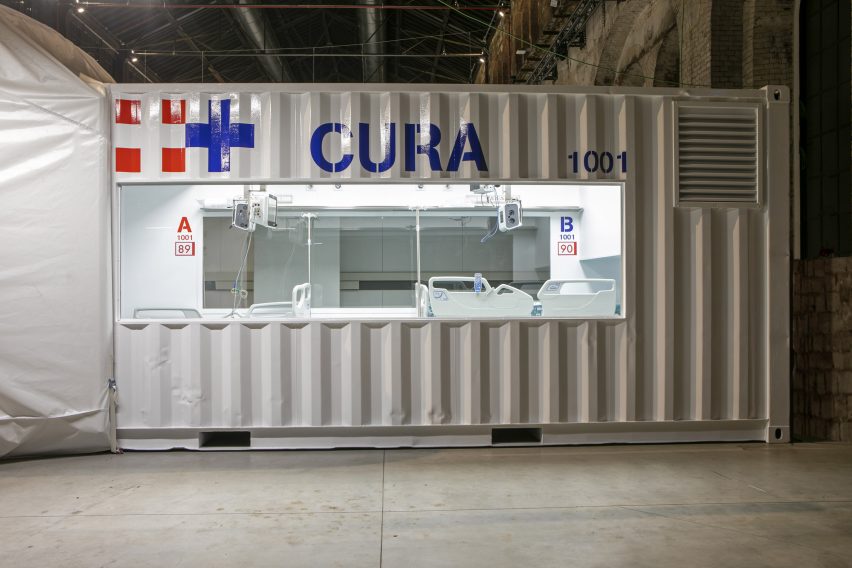
Built within a 6.1-metre-long shipping container, the intensive care pod contains beds and facilities – including ventilators, monitors, intravenous fluid stands and syringe drivers – for two patients.
"From a design point of view, containers have constraints: their dimensions cannot be changed," Ratti told Dezeen. "So CURA has required quite a bit of work to make sure that everything would fit inside them and that doctors would be comfortable with intubating patients inside it."
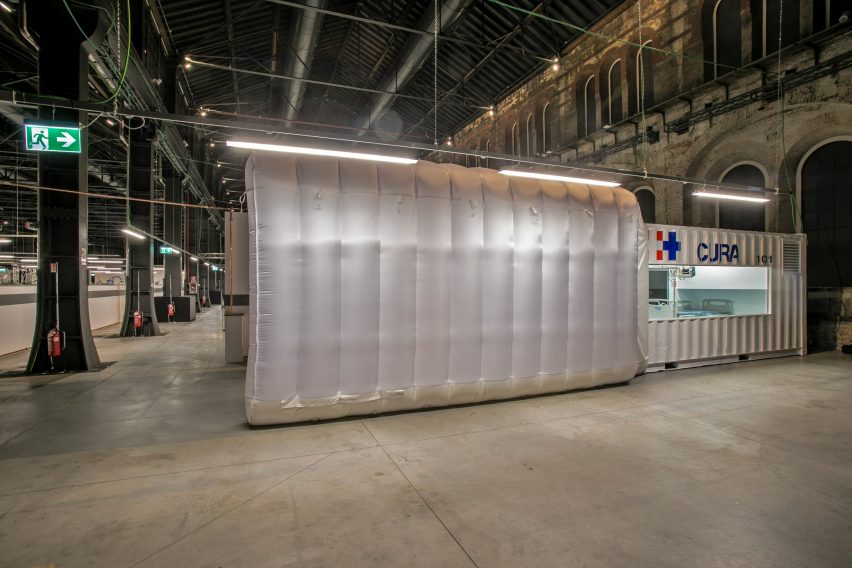
Ratti believes that the shipping-container pods combine the benefits of quickly assembled hospital tents with the safety of permanent isolation wards, which have ventilation systems that generate negative pressure.
"A standard hospital for infectious diseases needs special air treatment systems," explained Ratti.
"According to Chinese Covid-19 guidelines, it should guarantee at least 12 air changes per hour, sanitise exhausts with an ozone filter or an absolute filter and make sure that there is negative pressure inside each room, so that the virus cannot leak – negative pressure allows so-called 'bio-containment'," he continued.
"Such conditions are almost impossible to achieve in most tents or makeshift hospitals, which end up putting the lives of healthcare professionals at risk," he added.
"Using shipping containers, each with its own air treatment and filtering system, it is possible to make CURA pods as fast to mount as a tent hospital, but as safe to operate as a proper infectious disease ward."
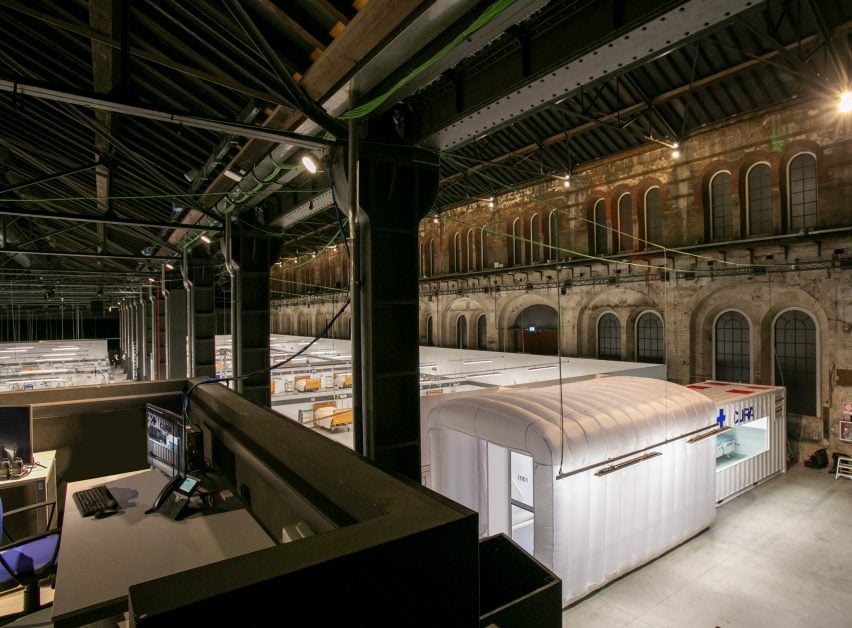
Ratti thinks that shipping containers have several further advantages over other prefabricated structures, as they can be moved to areas most impacted by the pandemic and require little set-up time.
"We have seen that Covid-19 infections move in waves," he said. "First Wuhan, then Milan, Madrid, New York have been the background of a shifting battleground."
"Shipping containers can be moved from city to city and installed faster than any other prefabricated structure," he continued. "CURA pods come already furnished with all medical equipment – beds, monitors, ventilators, gases, vacuum, etc. – and can be deployed and moved in a matter of hours.
"Even the most streamlined prefabricated hospital requires a few days of installation and testing before being fully functional."
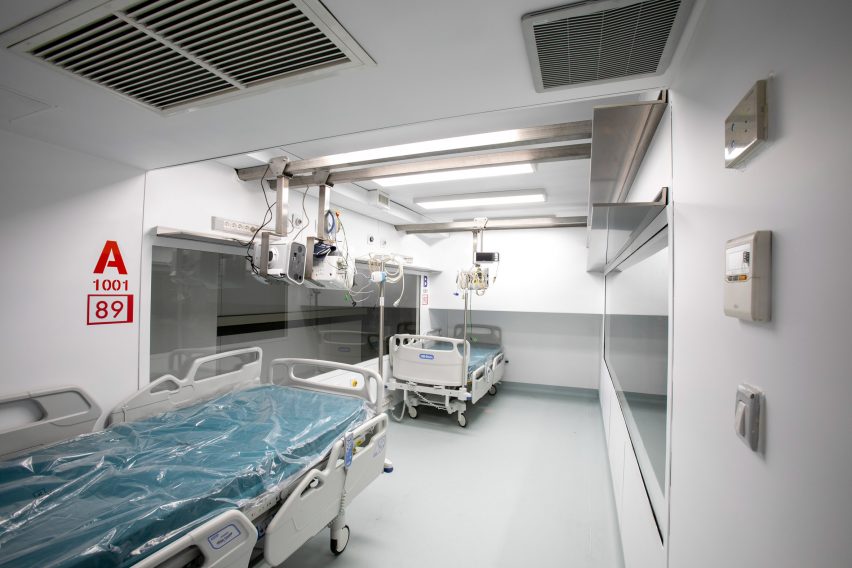
The CURA pods are designed to work as single units or combined with inflatable tunnels to create larger field hospitals. At the temporary Officine Grandi Riparazioni hospital, the unit is being used as a stand-alone intensive care ward.
"The site in Turin is a large, temporary hospital aimed primarily at patients who need sub-intensive care," said Ratti. "However, the conditions of Covid-19 patients can quickly degenerate – that's where CURA pods can provide intensive care."
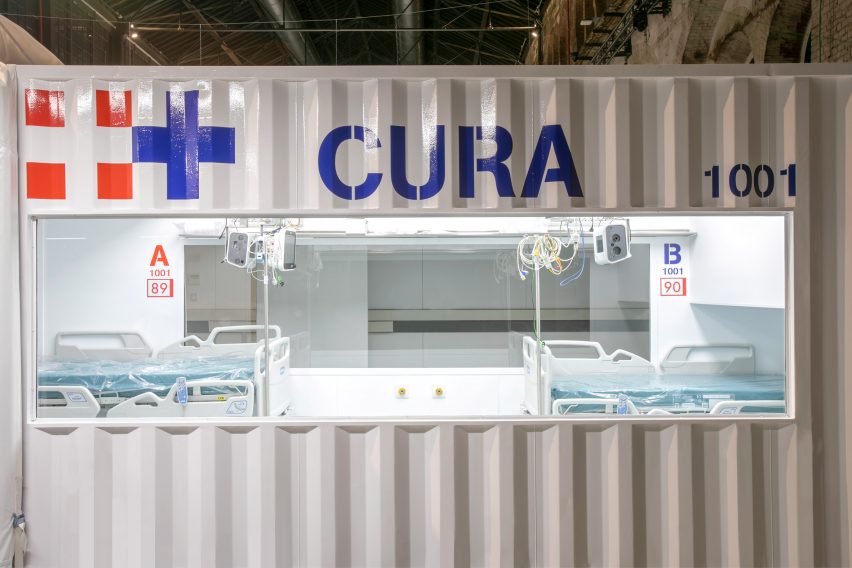
Two glass windows have been cut into the sides of the containers, which could potentially allow visitors to see their relatives while they are in intensive care.
"Two windows carved on the opposite sides of the shipping containers are meant for doctors to always get a sense of the status of patients both from inside and outside the pods," explained Ratti.
"In general the windows also allow visual contact between patients and their families, without the latter being exposed to the virus – one of the tragedies of Covid-19 has been the large number of 'lonely deaths'."
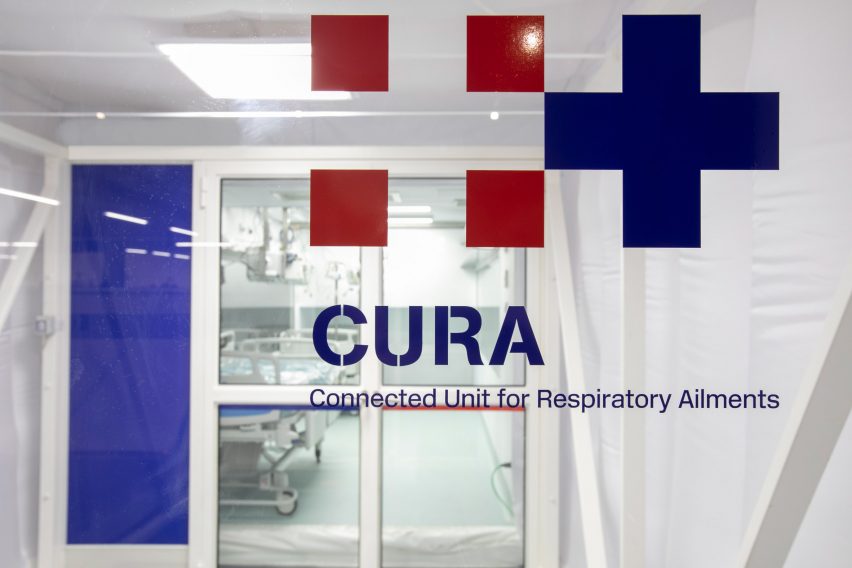
The pod in Turin is the first CURA pod to be built, but further units are already under construction in other parts of the world including the the USA, UAE and Canada. Ratti believes that the CURA template could be used across the world to increase intensive care capacity.
"Hospitals all over the world have been struggling to increase their ICU capacity to admit a growing number of patients suffering from severe respiratory diseases and needing ventilation," explained Ratti.

"Need is projected to continue in the next weeks or months, especially in the Global South. CURA provides an easy-to-install ICU extension for existing hospitals," continued Ratti.
"Shipping containers have been standardised and can be quickly moved all over the world by land, sea or air – CURA leverages the global logistics network for ICUs. Once on site, each container requires less than an hour of installation time as everything is already mounted inside it – it is only a matter of unloading it, powering it and connecting it to the vacuum and gases."
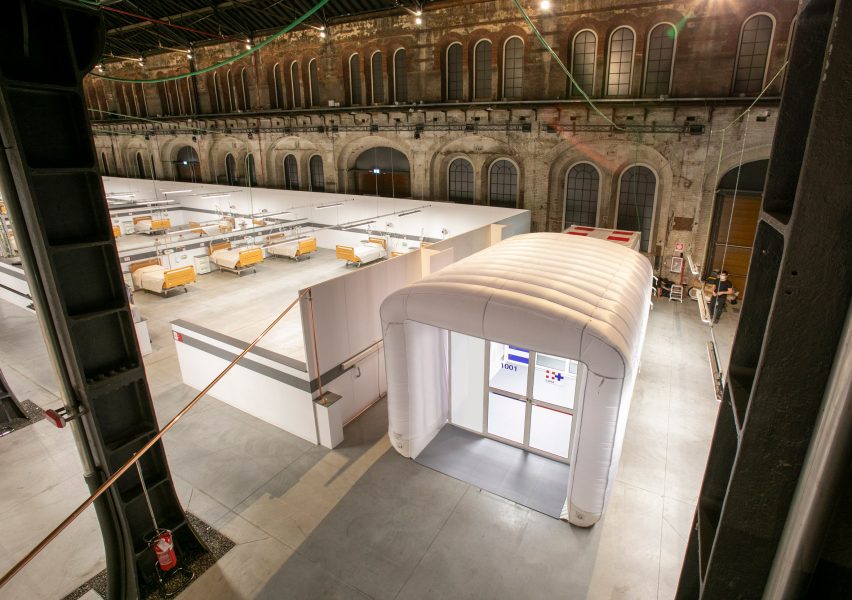
CURA is an open-source project, with all of the technical specifications and drawings available online. Designers around the world have already begun adapting the design to create intensive care units.
"In less than three weeks we received inquiries from hundreds of organisations and professionals from all over the world," said Ratti.
"CURA has developed as an open-source initiative. It is great to see that there are different teams improving the design in parallel. Some of them have already started building their own units – including in Canada, the USA, the UAE and other countries," continued Ratti.
"The virus is code that replicates itself and attacks us. Our best response is to develop our own code – in the case of CURA, the code of open-source design – and to let it multiply to fight back. This is not the time for patents or copyrights in design."
Architects and designers have been helping to combat the coronavirus pandemic in numerous ways including designing face shields and flat-pack intensive care units. Keep up with developments by following Dezeen's coverage of the coronavirus outbreak.
Photography is by Max Tomasinelli.
Project credits:
Design and innovation: CRA-Carlo Ratti Associati with Italo Rota
Medical engineering: Humanitas Research Hospital
Medical consultancy: Policlinico di Milano
Master planning, design, construction and logistics support services: Jacobs
Research: MIT Senseable City Lab
Visual identity & graphic design: Studio FM milano
Digital media: Squint/Opera
Safety and certifications: IEC Engineering
Logistics: Alex Neame of Team Rubicon UK
MEP engineering: Ivan Pavanello of Projema
Medical consultancy: Maurizio Lanfranco of Ospedale Cottolengo
Medical equipment supply: Philips
Painting products: Gruppo Boero
Support: World Economic Forum Covid-19 Action Platform, and Cities, Infrastructure and Urban Services Platform